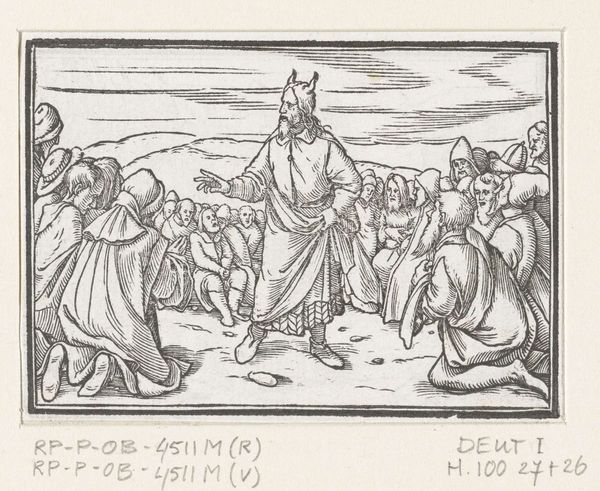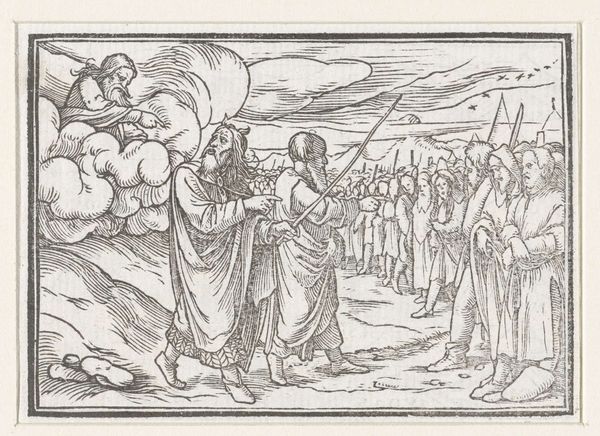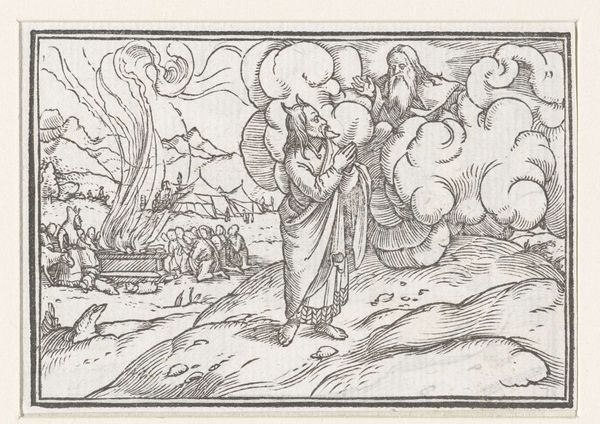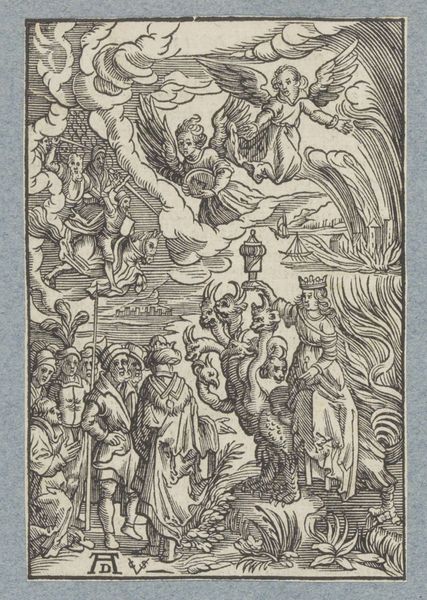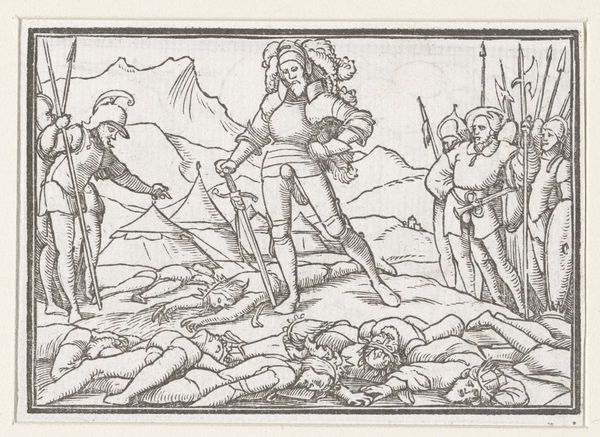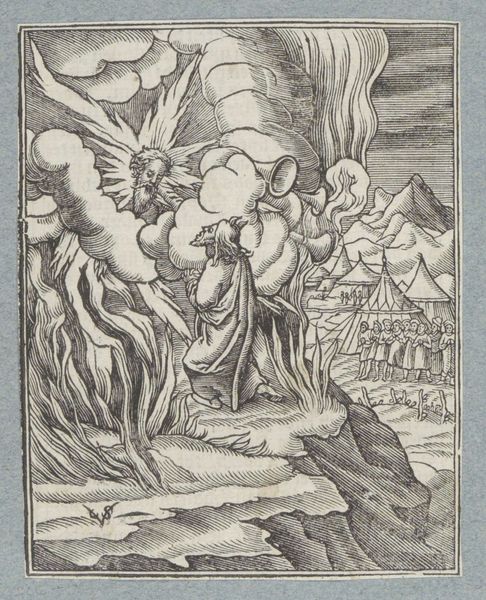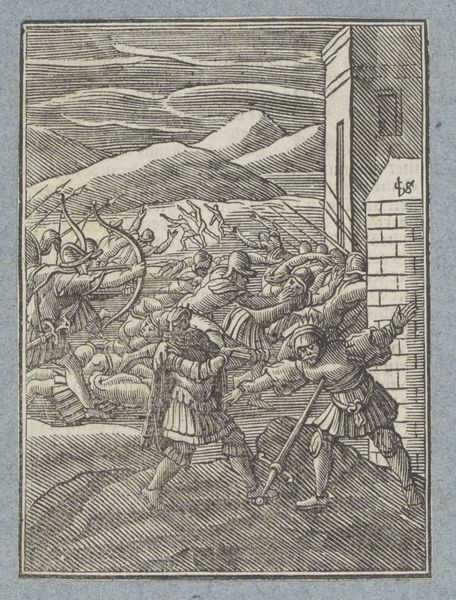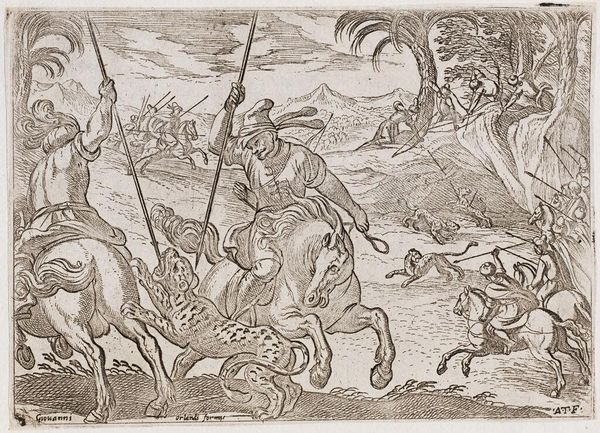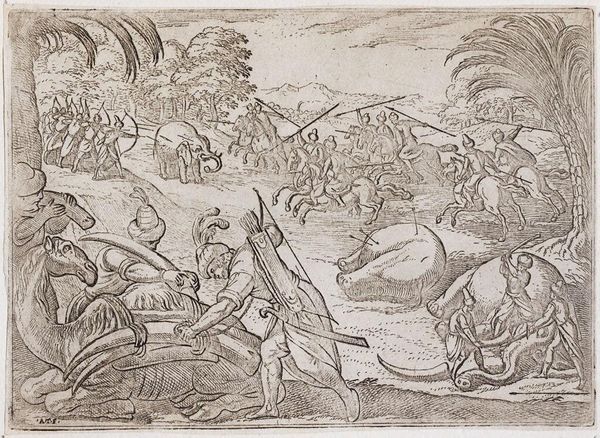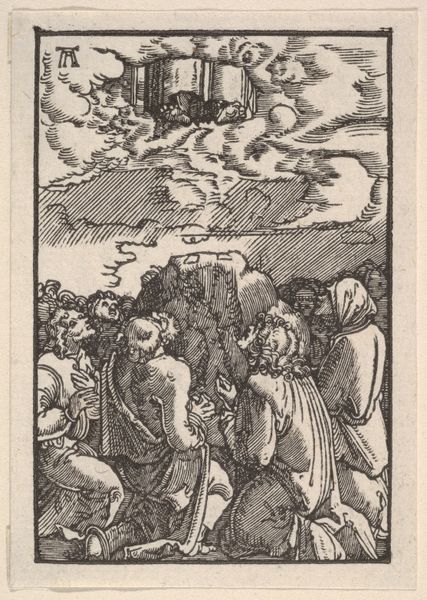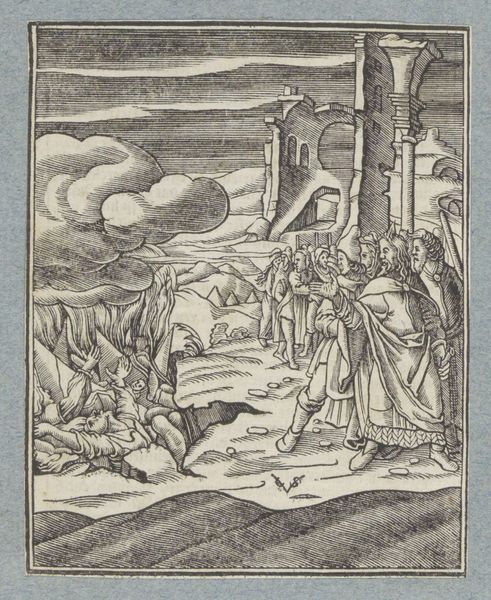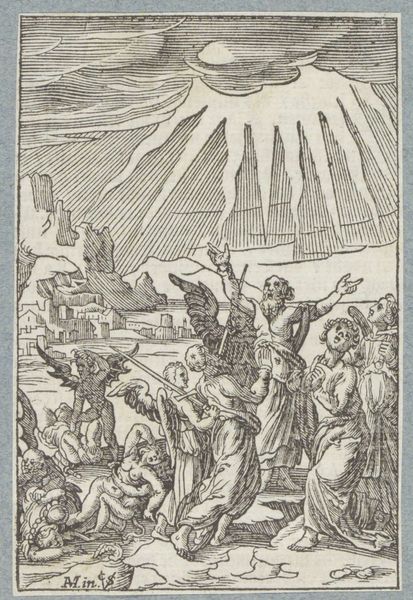
print, woodcut
#
narrative-art
# print
#
figuration
#
woodcut
#
line
#
history-painting
#
northern-renaissance
Dimensions: height 60 mm, width 85 mm, height 84 mm, width 98 mm
Copyright: Rijks Museum: Open Domain
Curator: This woodcut before us, entitled "Destruction of the Tribe of Korah", dates back to 1538 and is attributed to Hans Holbein the Younger. The print resides here at the Rijksmuseum. Editor: It's striking, even in its small format. The sharp contrast between the linear detail on the left and the inferno consuming figures on the right creates an intense visual and emotional divide. The meticulous line work stands in such stark contrast to the chaotic subject matter. Curator: Holbein was commissioned to create a series of woodcuts illustrating the Old Testament, showcasing his versatility even in smaller scales. The destruction scene here relates to a biblical narrative of rebellion against Moses’ authority, led by Korah, who challenged the hierarchical order. Editor: Yes, and look at the way he uses that line work to convey not just form but also, implicitly, the societal lines being drawn and violently defended. I’m interested in how the choice of a black and white print reinforces a very specific binary between good and evil, authority and dissidence. Is this intended as propaganda? Curator: Printmaking at that time was inherently political, designed for wide distribution to enforce morality and order. These biblical scenes were intended to function as didactic devices within the Protestant Reformation, reasserting power by demonizing dissent. The narrative and composition directly reflect social hierarchies. Editor: It's fascinating to consider how a readily accessible medium was weaponized for ideological control. Look how the expressions of the figures consumed by fire have been completely omitted, essentially dehumanizing the punished tribe. What’s reflected to the people is "do not rebel," which, regardless of its overt subject, would have had direct impact on other power struggles, like, say, peasant uprisings. Curator: Indeed. The imagery serves a potent visual warning. The stark representation of punishment reinforces accepted truths within specific socio-political structures. Editor: The intense emotional effect this imagery has, born of careful consideration to religious strife, serves as a potent example of how deeply entrenched systemic thought processes are within this piece, beyond face value.
Comments
No comments
Be the first to comment and join the conversation on the ultimate creative platform.
